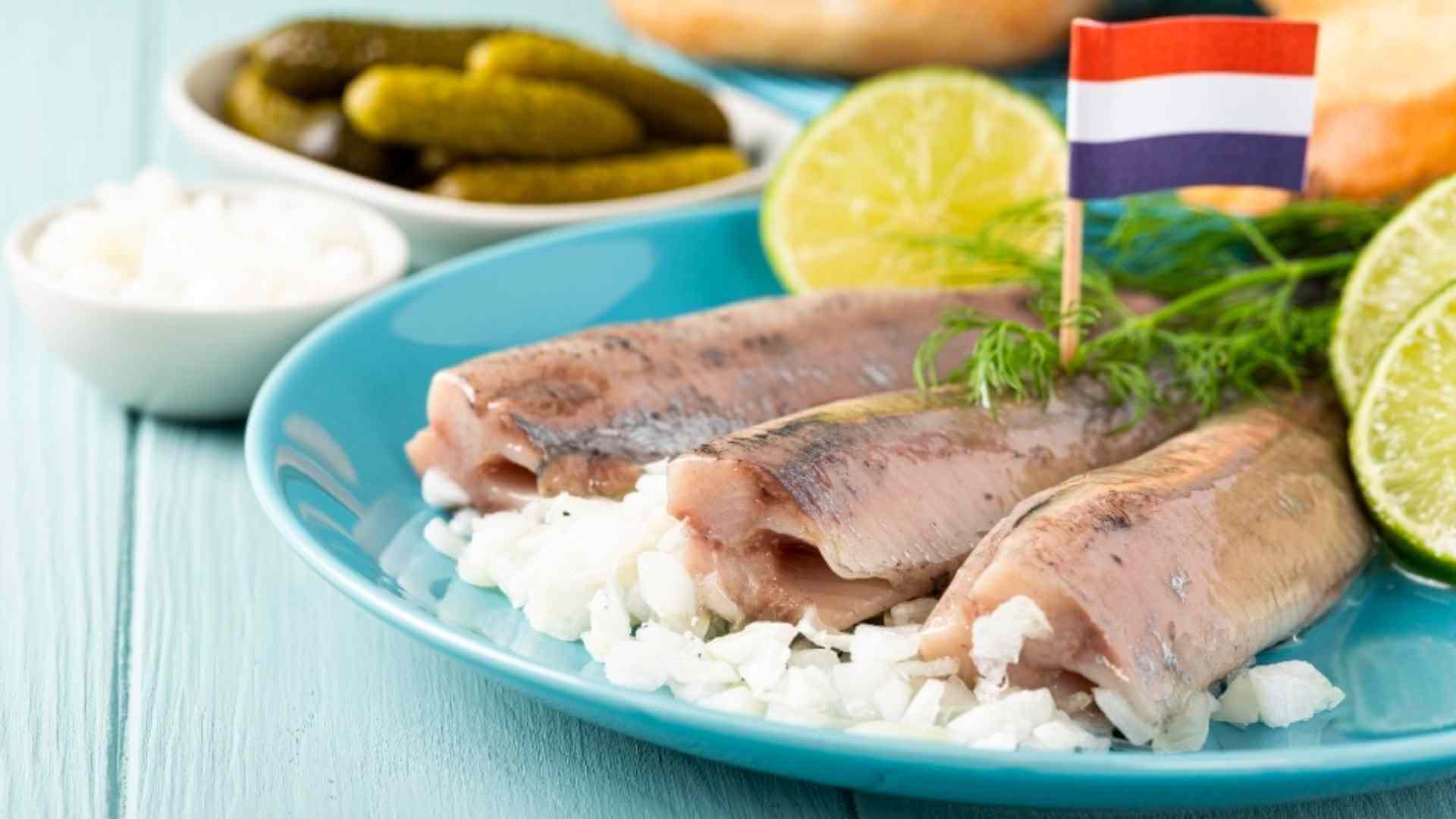The Dutch are skilled farmers, diligent seamen, and, generally, people with a zest for life and delicious hearty meals, whether it comes from the water they live by or the ground they set their feet on. Their cool temperature, proximity to the sea, and sense of adventure have made them what they are. The traditional Dutch food has found reflection in all of this. The Top 10 typical Dutch Foods you must try before you die are listed below.
Stamppot – Typical Dutch Foods
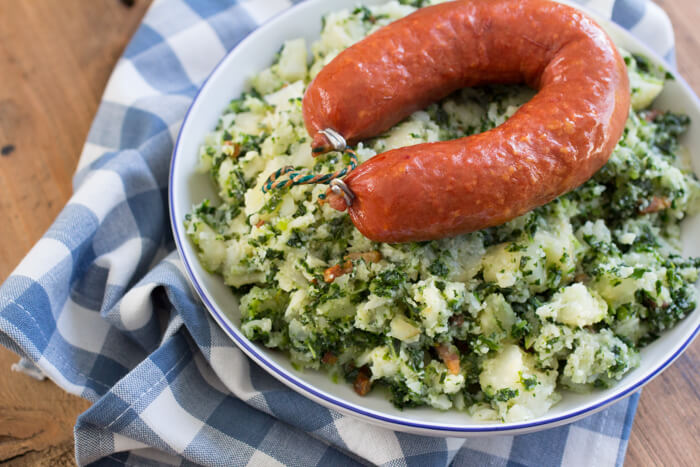
On a cold winter afternoon in Amsterdam, you’ll die for Stamppot, if you know what it is. Those who haven’t tried mashed potatoes with kale, carrots, endive, or sauerkraut will be delighted. Depending on the vegetable, the dish is called boerenkool (kale), zuurkool (sauerkraut), hutspot (onions and carrots), or andrauweandijvie (endive).
Stamppot’s other indivisible ingredient is rookworst, a locally manufactured smoked sausage that kills winter hunger. Several restaurants in Amsterdam provide it, including “Stamppotje,” which exclusively serves it in the winter. Warmer weather means ice cream. Pick the proper season to sample their Stamppot.
Don’t forget You’ll never really be Dutch until you try These Weird Foods
Erwtensoep

Some European countries east of Holland could disagree with the Dutch on pea soup being their national food. In Holland, it’s called Erwtensoep (“air-ten-soup”) and “snert” Split peas, chopped vegetables (onion, leek, celeriac, carrot, potato), and pig (ribs, trotters, and/or bacon) make this simple yet hearty dish popular across Europe.
Who knows what the Germans or Poles call their sausages that accompany this soup? As if! Erwtensoep is the definition of a self-sufficient Dutch farm. Make sure it’s served with roggebrood, a hearty rye bread, and you’ll survive another Amsterdam winter.
Bitterballen – Typical Dutch Foods
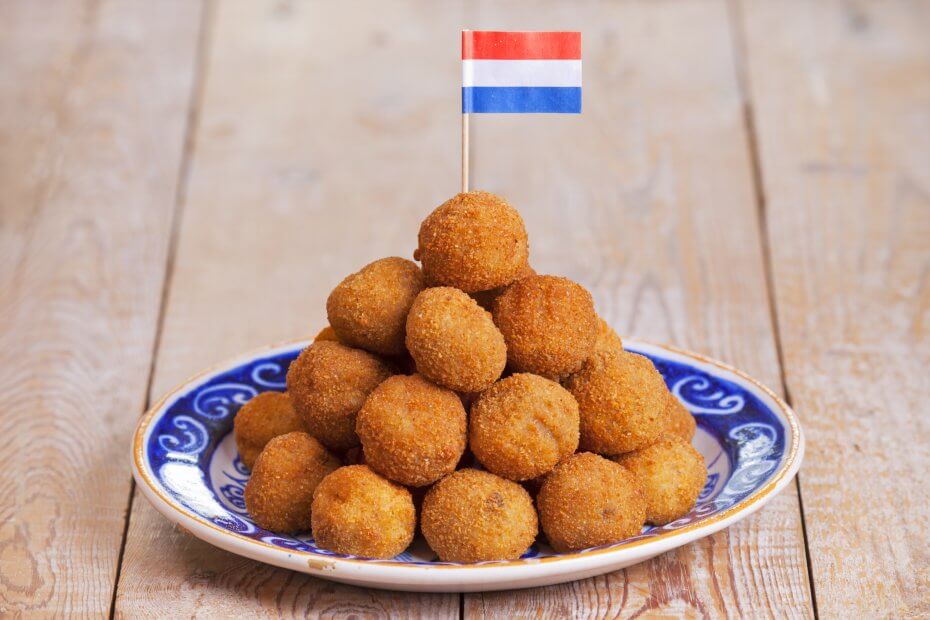
Meatballs aren’t new to most European cuisines, but only the Dutch have made ‘Bitterballen’ a beer snack. You can find these at most Amsterdam cafes and bars due of the Dutch love of beer. Meat balls are deep-fried in oil and coated with breadcrumbs for crunch. Bitterballen are traditionally served with mustard. First bite counts!
The beef, beef broth, butter, flour, and spices inside can be very hot. Stuffing, cooking, and flavor are similar to ‘kroketten’ When ordering Bitterballen, be careful not to mention “Dieter Bohlen” (an 80s German singer) instead.
Herring
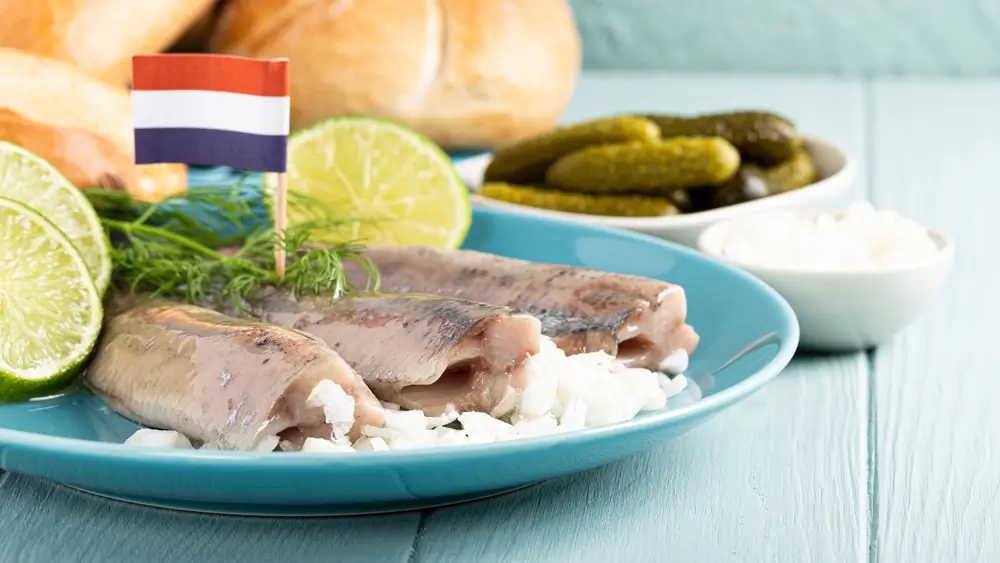
The Dutch love herring, a fatty, oily fish packed in omega-3 vitamins. In the old days, sea-hardened men ate full raw herrings in Amsterdam’s streets, which is only uncooked (the fish were slightly brined).
Herring fishing has been part of Amsterdam’s history from the beginning, contributing to its rapid growth along with the beer trade, especially once the Dutch discovered how to cure the gutted fish to make it last longer. The herring season begins in May, and then the frenzy over “nieuwe haring” (Dutch for “new herring,” the first catch of the season) begins.
Sanitary standards require that all herring taken in the sea be frozen (to kill worms). Therefore delicious fish is accessible year-round (knowledgeable people say, in fact, that herring in November tastes just as good as it does in June). This has led to the city’s many haringhuis and vishandels. The Dutch eat salt-cured herring with onion and schnapps.
Patat (or Vlaamse Frites)
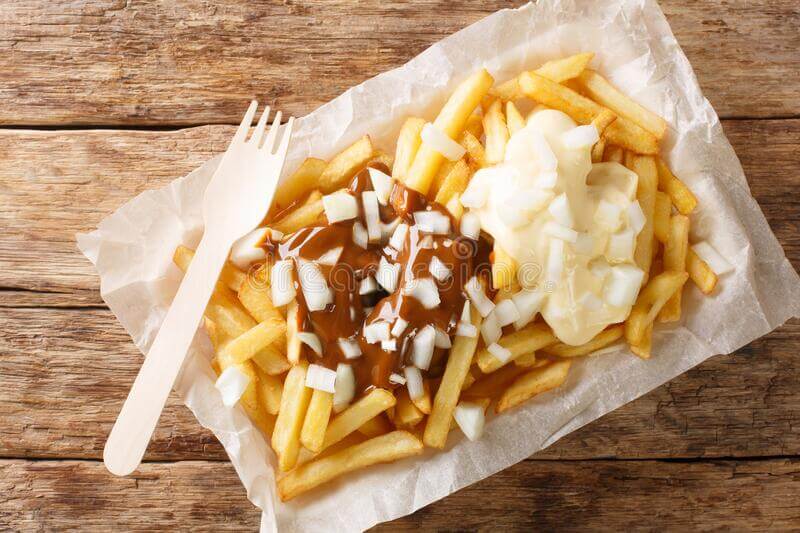
The Dutch love fried potato sticks, whether you name them fries, chips, frites, or something else. North Belgians name it patat or Vlaamse frites (“Flemish fries”) This originally Flemish patat is a famous street snack in Amsterdam, offered everywhere from modest storefront counters to street vendors to fast-food establishments. Usually served in paper cones with sauce. They drown them in a mix of mayo, peanut satay sauce, and raw onions. What would Jules Winnfield and Vincent Vega say?
Kaas (Dutch Cheese) – Typical Dutch Foods
Those who have tried authentic Dutch cheese may believe that “kaas” (Dutch for “cheese”) is just the crippled English “class” which lost its “L” over time, but nonetheless fully describes the palette of feelings inspired by the taste of this, perhaps the most famous Dutch delicacy.
Since 800 B.C., Holland has been making cheese, making it one of the world’s top cheese exporters. A Dutch person consumes 21 kilograms of kaas annually, illustrating their devotion for their product. Dutch cheeses are mostly semi-hard or hard, but there are others.
When in Amsterdam, search for ‘Old Amsterdam’ and ‘Gouda’! The Dutch eat it for breakfast, lunch, or as a snack dipped in mustard (cut into cubes). It’s good with wine or beer. Reypenaer’s Tasting Room is one place in Amsterdam to try this.
Hagelslag
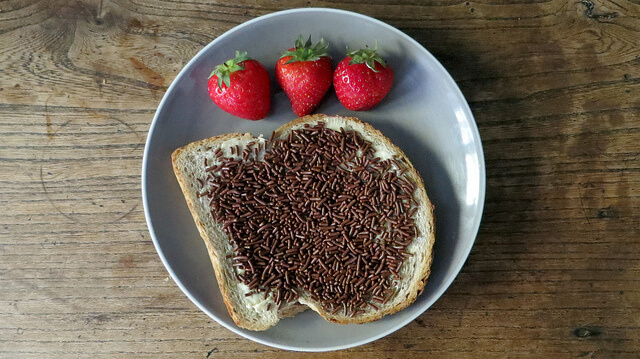
Dutch kids and adults love sprinkles. They have a particular term, ‘Hagelslag,’ for breakfast and lunch sprinkle sandwich filler. The Dutch love more than sandwiches, especially sweets. Chocolate sprinkles are popular. Alternatives include anise (licorice) seed and fruit-flavored ‘hagelslag’
Stroopwafel
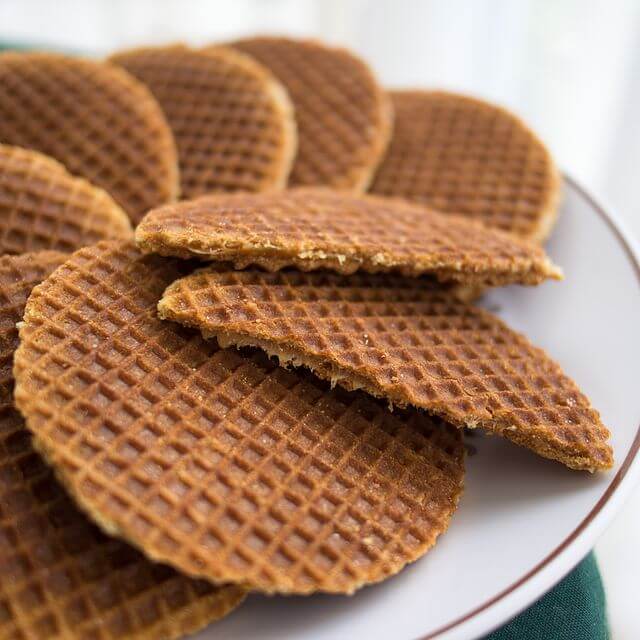
If not for’stroopwafel,’ I’m not sure what else could have put the Netherlands on the world pastry map. Holland is famous for its horizontally cut waffle created from cooked batter, thanks to the cookie. Two waffle layers are sandwiched with’stroop’ syrup. Butter, flour, yeast, milk, brown sugar, and eggs make up waffle batter.
Gouda, south of Amsterdam, is’stroopwafel’s’ home. Some unknown bakers used leftovers (breadcrumbs, etc.) and sweetened them with syrup in the late 18th-early 19th century. Brilliant! (well, almost, if he had the wits to copyright the invention for posterity to collect royalties…) Amsterdam’s supermarkets sell ‘Stroopwafels’
Appeltaart – Typical Dutch Foods
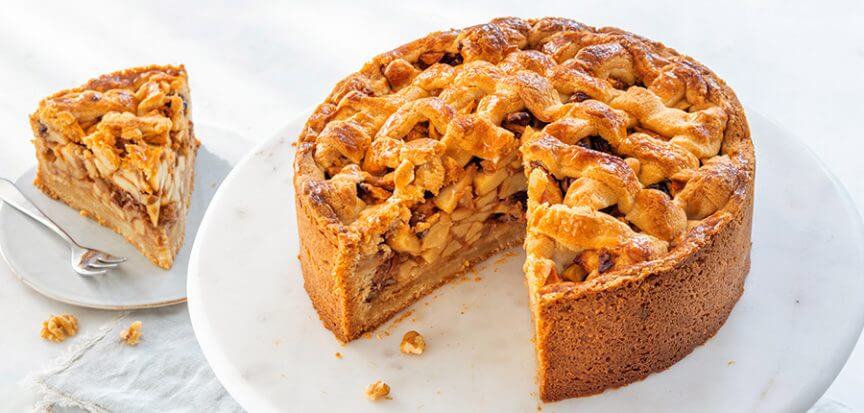
In 1514, when the Dutch first published appelltaart recipe in a cookbook, it wasn’t. Holland makes apple tarts deep and covered on both ends, unlike France (top and bottom). Goudreinet apple slices or bits, sugar, cinnamon, and lemon juice go within. Raisins or currants may be added. Traditionally, the pie’s top is decorated with a pastry lattice that reveals the filling. Met slagroom (whipped cream) and koffie accompany appelltaart (coffee, a cup of).
